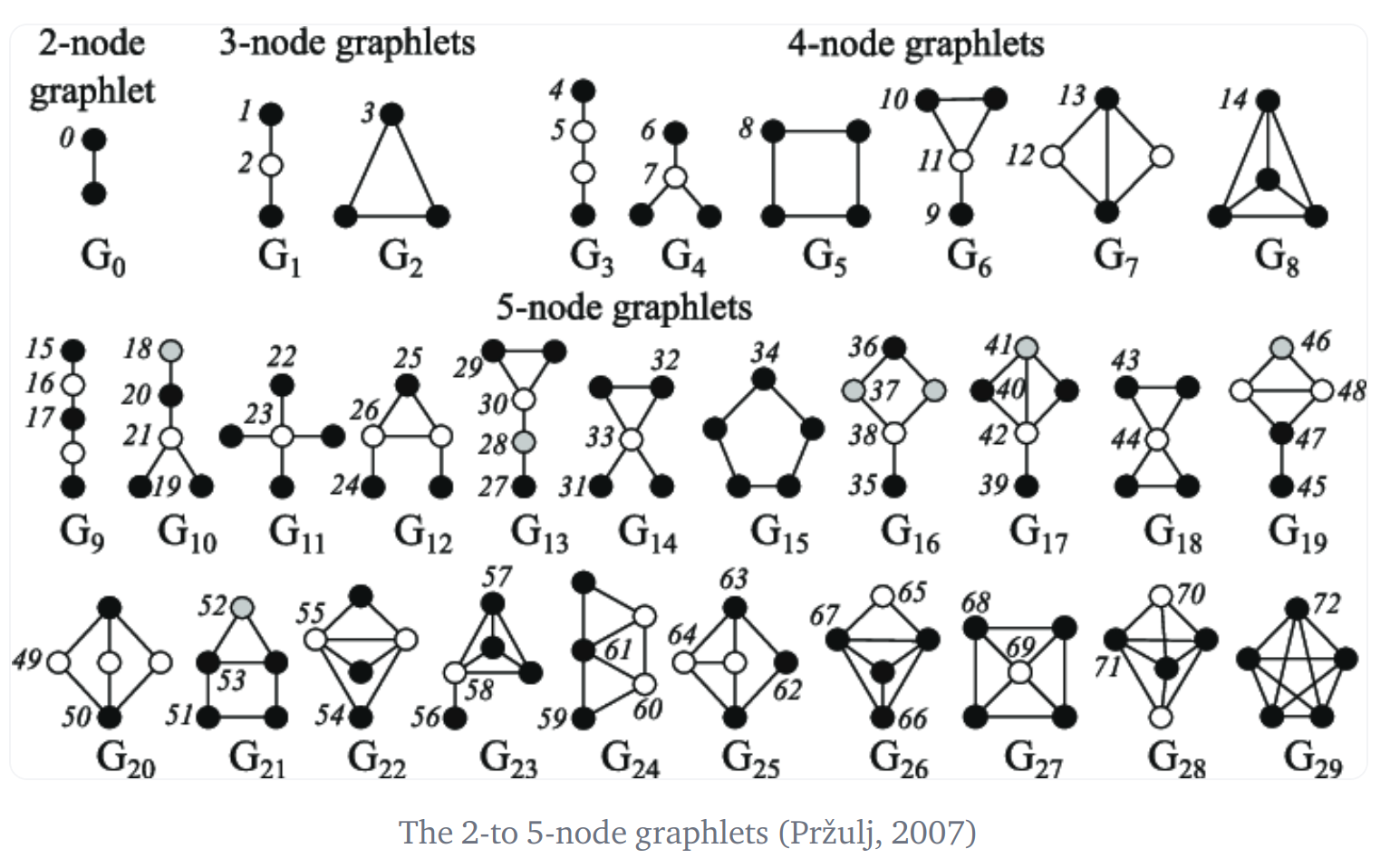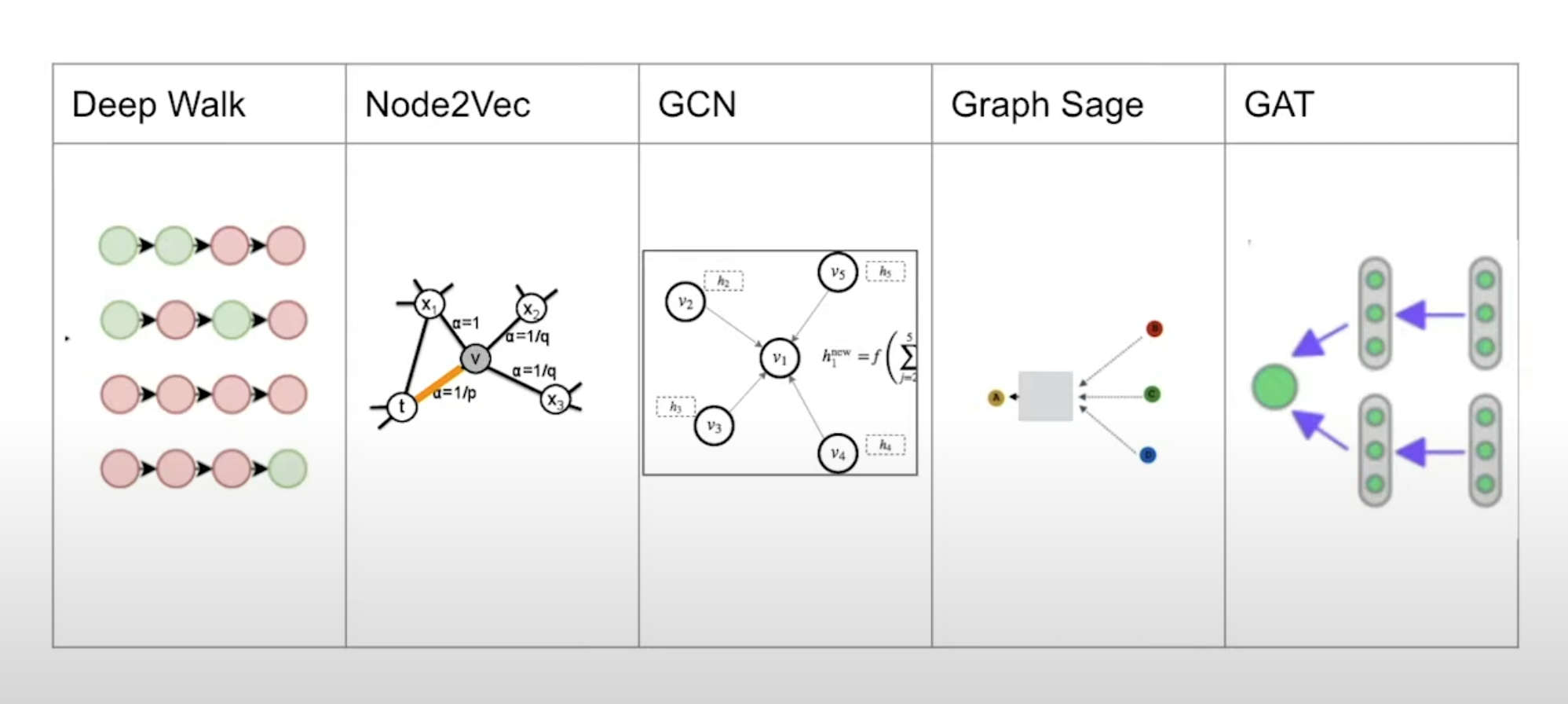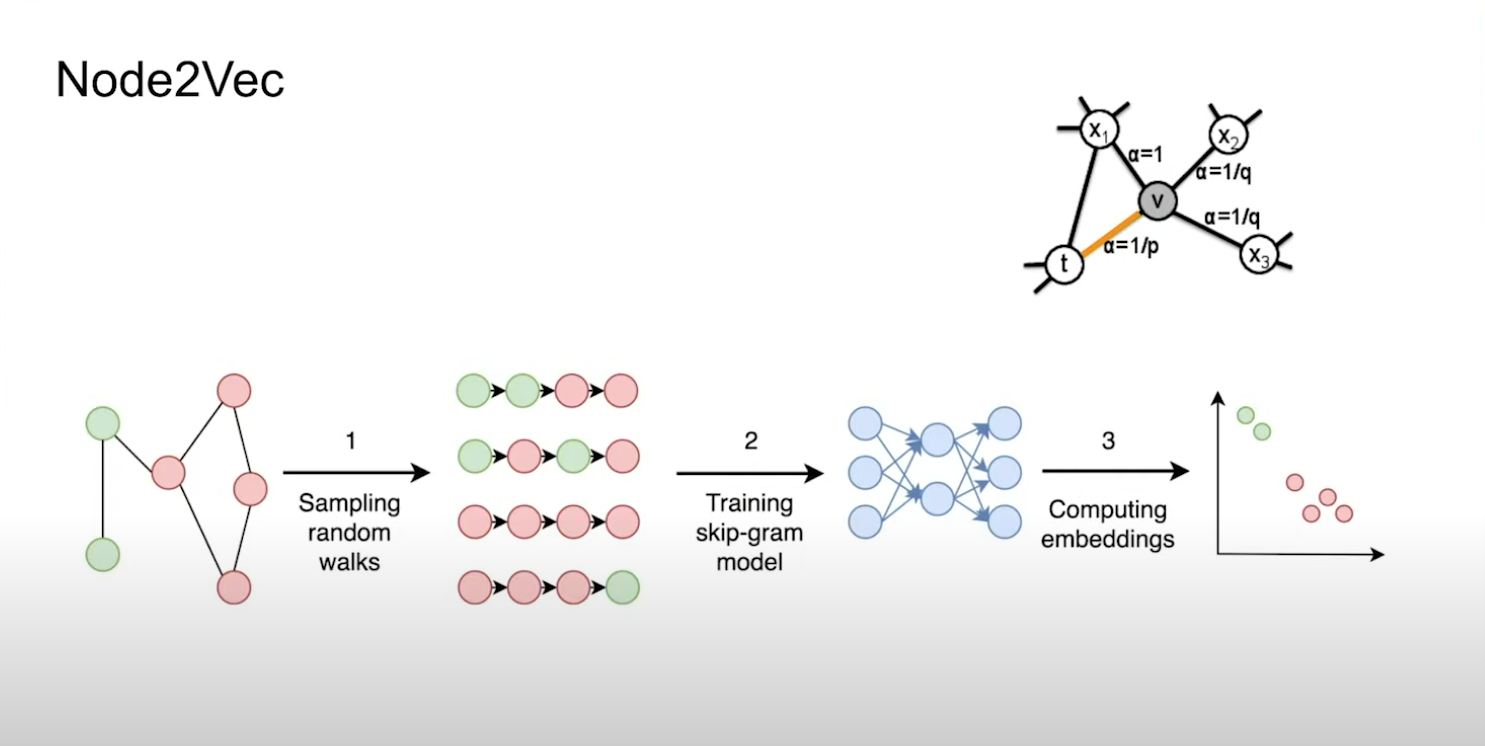Graph Machine Learning
Node level features
Node Centrality measures the node importance in a graph. Node degree is the quantity of direct neighbours it has. clustering coefficient measures how connected are the node neighbours. Graphlets degree Vectors count how many different graphlets are rooted at a given node.

Edge level features
- Shortest distance between two nodes
- Common neighbours of two nodes
- Katz index - Number of possible walks up to a certain length between two nodes
Graph level features
- Graphlet counts
- Kernel methods measure similarity between graphs through different “bag of nodes” methods (similar to bag of words)
Graph ML methods

Walk-based approaches

- Node2Vec simulates random walks between nodes of a graph, then processes these walks with skip-gram, to compute embeddings
- The drawback of Node2Vec is as the graph changes the embeddings should change. Suitable for a static graph
Graph Neural Networks

- Graph Convolutional Networks averages the normalised representation of the neighbours for a node (most GNNs are actually GCNs)
- Graph Attention Networks learn to weigh the different neighbours based on their importance (like transformers)
- GraphSAGE samples neighbours at different hops before aggregating their information in several steps with max pooling.
- Graph Isomorphism Networks aggregates representation by applying an MLP to the sum of the neighbours’ node representations.